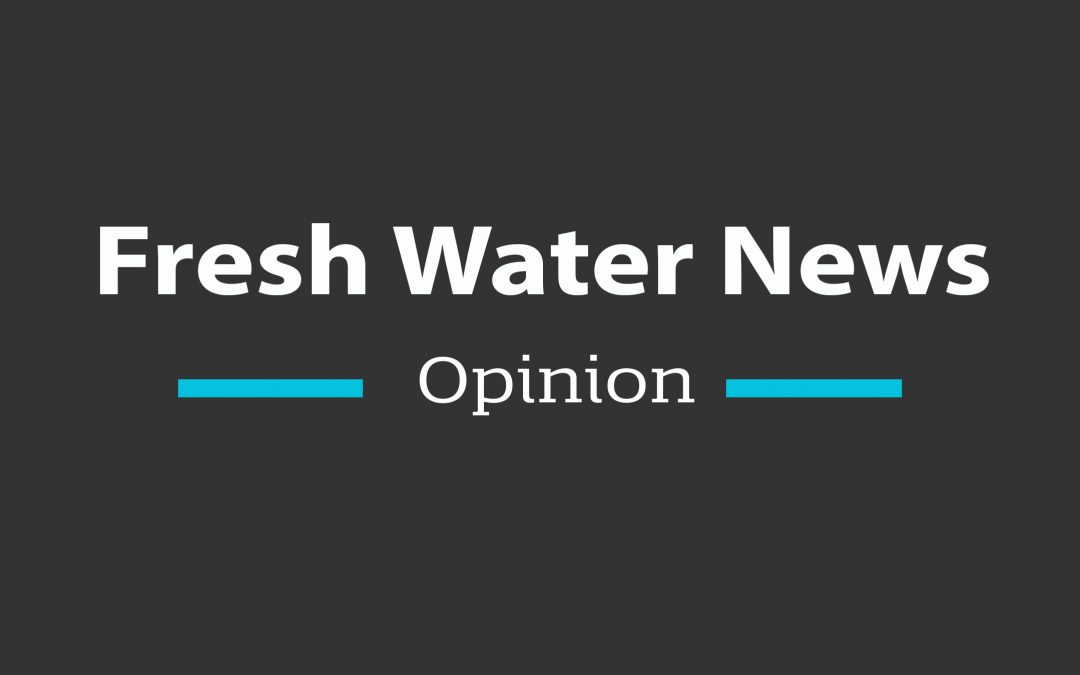Colorado’s water-related issues are possibly more challenging today than at any time in the state’s history.
Perhaps largest is our collective responsibility to recognize the looming half-million-acre-foot gap between available water supply and the anticipated statewide demand in 2050. Thousands of decisions must be made throughout the state’s water community to chip away at what sometimes appears to be an insurmountable task. Without question, the analysis of our water supply strategies – for municipalities, agriculture and the environment – will improve if we obtain the appropriate data to fuel our decision-making processes.
Last week Fresh Water News implied that Colorado’s use of water to grow food is proportionately higher than that of many other states. More specifically, the article titled “Colorado’s farm water use exceeds national average, despite efforts to conserve,” argues that an irrigation application rate of 1.6 acre-feet per acre scores poorly against a national average of 1.5 acre-feet per acre. I might suggest that encapsulating and grading how Colorado farmers and ranchers apply water to irrigable lands in a single statewide metric is an oversimplification and, furthermore, an inappropriate use of data.
Early Colorado settlers were unorthodox in selecting lands worthy of irrigation. Some selected high-mountain clearings at elevations above 9,000 feet. Others selected flatter river valleys, while some chose the Eastern Plains with little relief and nary a mountain in sight. In many instances, what may seem at first glance like an inefficient irrigation method can in fact result in substantial benefits far from the farm field.
In mountainous areas, water applied in excess of a meadow pasture’s soil water holding capacity will ultimately sustain the flow of a nearby stream that would otherwise become a trickle by late summer. In other parts of the state, water application in excess of crop needs will result in return flows to nearby streams and generate a supply available for call by a downstream appropriator.
Bringing this topic closer to home, however, provides some interesting contrast.
Since 1993, Northern Water has developed and operated a network of weather stations throughout its 1.6 million-acre service area. At present, Northern Water maintains 10 stations that provide near-real-time crop water use data to agriculture producers throughout Northern Water’s eight-county service area.
Interestingly, the computed average seasonal evapo-transpiration over the past five years from these sites (the amount of water necessary for the production of grain corn) is 23.3 inches. Subtracting the amount of water contributed by effective rainfall on average during the growing season results in a computed net irrigation requirement of nearly 17 inches, or 1.4 acre-feet per acre. Comparing this locally computed irrigation requirement to the statewide USDA value of 1.6 acre-feet of applied water reported by Fresh Water News suggests an application efficiency of 87 percent. This is a hopeful – but ultimately unrealistic – irrigation efficiency outcome for present-day northeastern Colorado, let alone for the state as a whole. This disconnect in data accuracy highlights the importance of using appropriate and ground-truthed input, when possible, for decision-making processes.
In addition, the Fresh Water News article claims that little has been done to improve irrigation efficiencies throughout Colorado. Extracting data from the state’s South Platte Decision Support System suggests the contrary.
Again, using Northern Water’s boundaries as a proxy, the state’s database summarizes irrigable lands and the associated irrigation type: flood versus sprinkler. For the year 1987, the SPDSS data note that more than 16 percent of the wetted acres within Northern Water’s service area were irrigated via sprinkler. Fast forward 28 years to 2015, and the same analysis demonstrates that more than 50 percent of the irrigated acres are sprinkler irrigated. That’s a 213 percent increase in acres migrating from 60 percent efficient flood irrigation to 85 percent efficient sprinkler irrigation.
All told, the state’s data indicate there has been a conversion of 192,000 acres from flood to sprinkler irrigation in Northeastern Colorado since 1987. Using the present-day capital cost to install a center pivot irrigation system ($700 per acre), one can estimate that irrigators motivated toward increased irrigation efficiencies collectively invested $134 million from 1987 to 2015. As appropriately described in the Fresh Water News article, investments in irrigation efficiencies in Colorado do not always yield water for our growing demand. More commonly, such conserved water is rerouted to nearby junior water right holders to rightfully satisfy portions of their respective, and sometimes unmet, demand.
The challenges of Colorado’s collective and future water decisions are immense, but worthy of our time and investment. Let us use the best data available to aid us in our efforts.
Brad Wind is the general manager of Northern Water, a water conservancy district that serves more than 1 million residents and 640,000 acres of irrigated farmland in northeastern Colorado.


 Print
Print